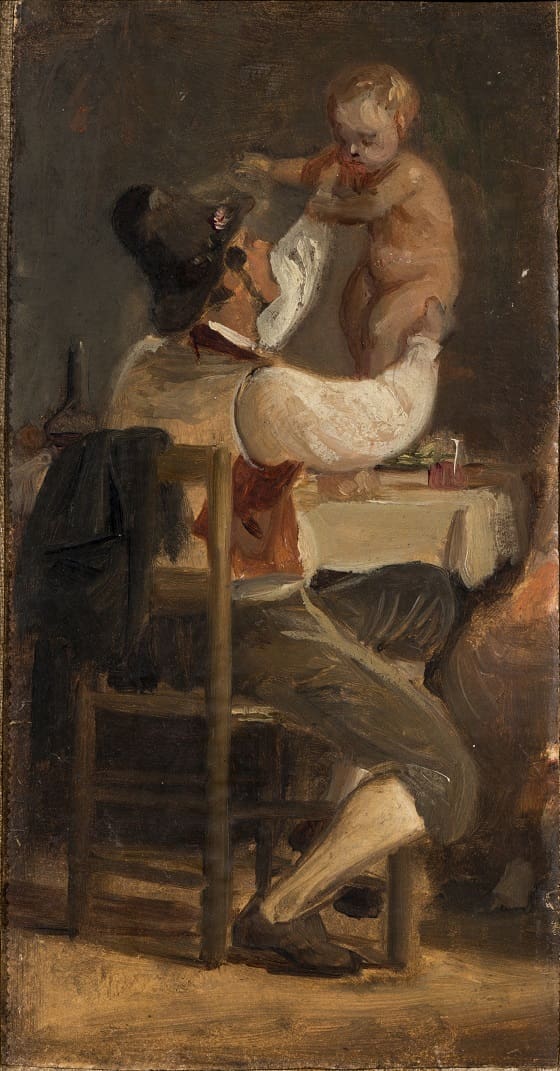Wilhelm Marstrand
Father’s love, c. 1839
Oil on cardboard, 22 x 12 cm.
Inventory number: 0100NMK
Acquired before 1884. Bestowed to the museum in 1908
A proud father in Italian garb lifts his infant child while looking into its eyes. The painting is an intimate portrayal of the love between father and child and a prestudy for a later work with the same title. At the heart of the subject is the child’s harmonious attachment to its father, which is in accordance with Wilhelm’s view of the ideal family. In 1840, Marstrand wrote a letter to his brother Osvald where he expressed his views on the role of family in society: “I remain convinced that a man’s enterprise and work in society has its source in the home, from whence it finds nourishment and ripens.” Marstrand therefore believed that the individual would only be able to truly achieve his potential for the benefit of society if he had a harmonious and supportive family at home.
Wilhelm Marstrand (1810-1873)
Marstrand was among C.W. Eckersberg’s students and was, as the only one, very interested in narrative and illustrative painting. Marstrand worked with genre painting, literary subjects, portraiture and, in later years, history painting. He was frequently employed as a portraitist and painted a series of portraits of members of the Hage family, among others. Marstrand travelled throughout his life in the larger European countries such as Italy, France, Germany and England. He was particularly fascinated by Italy, where he stayed for several years. From here, he became a major producer of peculiar, touching, and often humorous or ironic depictions of the Italian folk life that so fascinated him.


